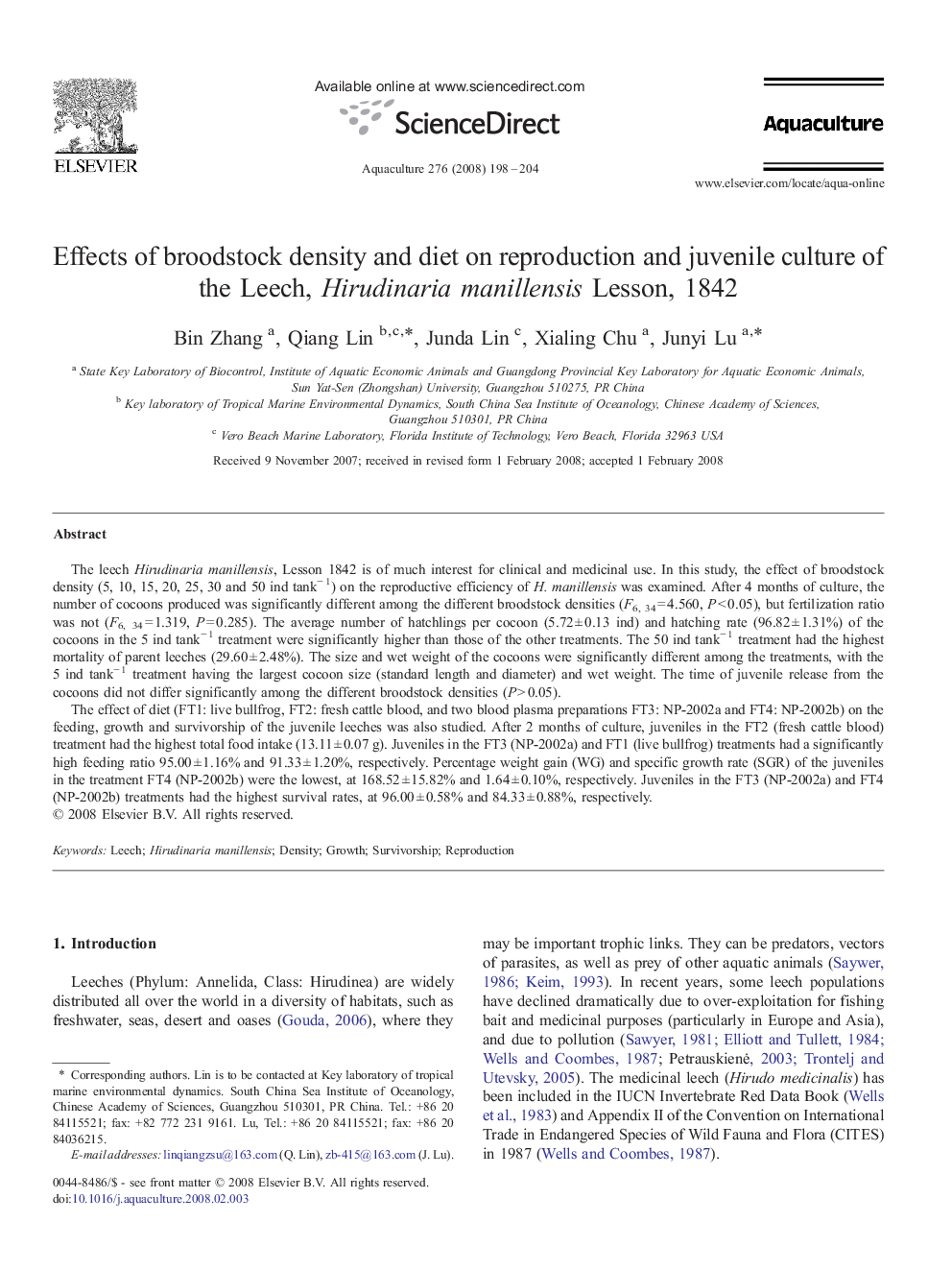| کد مقاله | کد نشریه | سال انتشار | مقاله انگلیسی | نسخه تمام متن |
|---|---|---|---|---|
| 2424693 | 1552966 | 2008 | 7 صفحه PDF | دانلود رایگان |

The leech Hirudinaria manillensis, Lesson 1842 is of much interest for clinical and medicinal use. In this study, the effect of broodstock density (5, 10, 15, 20, 25, 30 and 50 ind tank− 1) on the reproductive efficiency of H. manillensis was examined. After 4 months of culture, the number of cocoons produced was significantly different among the different broodstock densities (F6, 34 = 4.560, P < 0.05), but fertilization ratio was not (F6, 34 = 1.319, P = 0.285). The average number of hatchlings per cocoon (5.72 ± 0.13 ind) and hatching rate (96.82 ± 1.31%) of the cocoons in the 5 ind tank− 1 treatment were significantly higher than those of the other treatments. The 50 ind tank− 1 treatment had the highest mortality of parent leeches (29.60 ± 2.48%). The size and wet weight of the cocoons were significantly different among the treatments, with the 5 ind tank− 1 treatment having the largest cocoon size (standard length and diameter) and wet weight. The time of juvenile release from the cocoons did not differ significantly among the different broodstock densities (P > 0.05).The effect of diet (FT1: live bullfrog, FT2: fresh cattle blood, and two blood plasma preparations FT3: NP-2002a and FT4: NP-2002b) on the feeding, growth and survivorship of the juvenile leeches was also studied. After 2 months of culture, juveniles in the FT2 (fresh cattle blood) treatment had the highest total food intake (13.11 ± 0.07 g). Juveniles in the FT3 (NP-2002a) and FT1 (live bullfrog) treatments had a significantly high feeding ratio 95.00 ± 1.16% and 91.33 ± 1.20%, respectively. Percentage weight gain (WG) and specific growth rate (SGR) of the juveniles in the treatment FT4 (NP-2002b) were the lowest, at 168.52 ± 15.82% and 1.64 ± 0.10%, respectively. Juveniles in the FT3 (NP-2002a) and FT4 (NP-2002b) treatments had the highest survival rates, at 96.00 ± 0.58% and 84.33 ± 0.88%, respectively.
Journal: Aquaculture - Volume 276, Issues 1–4, 30 April 2008, Pages 198–204